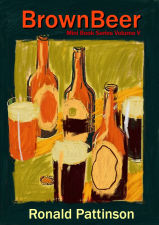Younger wasn’t content with making No. 3. They made two of them: No. 3 and No. 3 Pale. The difference, I assume, being the colour.
Though if you look at the recipes, they come out about exactly the same shade. No sugar in this version, just 100% base malt. It’s not a complicated beer. Though there were three types of pale malt, made of barley from various countries.
What complication there is, comes in the hopping. Where there are four copper hops: Kent from the 1884 and 1885 harvests, plus Württemberg and American, both from 1884. Then there are four dry hops: Württemberg and American from the 1885 season, with American and East Kent, both from 1884.
Was this aged? I would think so. Probably around a year. With Brettanomyces, of course. Which would drop down that FG quite a bit. Leaving the apparent attenuation 75%-80% and pushing 8% ABV.
| 1885 William Younger No. 3 Pale | ||
| pale malt | 18.00 lb | 100.00% |
| Cluster 150 min | 2.00 oz | |
| Hallertau 60 min | 2.00 oz | |
| Fuggles 30 min | 2.00 oz | |
| Hallertau dry hops | 1.00 oz | |
| Cluster dry hops | 0.67 oz | |
| Hallertau dry hops | 0.33 oz | |
| Goldings dry hops | 0.33 oz | |
| OG | 1077 | |
| FG | 1024 | |
| ABV | 7.01 | |
| Apparent attenuation | 68.83% | |
| IBU | 73 | |
| SRM | 6 | |
| Mash at | 153º F | |
| Sparge at | 163º F | |
| Boil time | 150 minutes | |
| pitching temp | 55.5º F | |
| Yeast | WLP028 Edinburgh Ale | |











































































2 comments:
What was it like by the time you were drinking it?
Oscar
I occasionally drank it at about the same time. It had been withdrawn for I don't know how long and was reintroduced sometime in the late 70's.
I liked it. It was the same gravity as Youngers IPA (1043) which I also liked, and was basically the same beer but coloured up a bit. A very smooth beer. Really they mirrored Taylors Landlord and Ram Tam though the no 3 was not quite as dark.
Later on I found the flavour became rather coarser and I went right off it.
Post a Comment